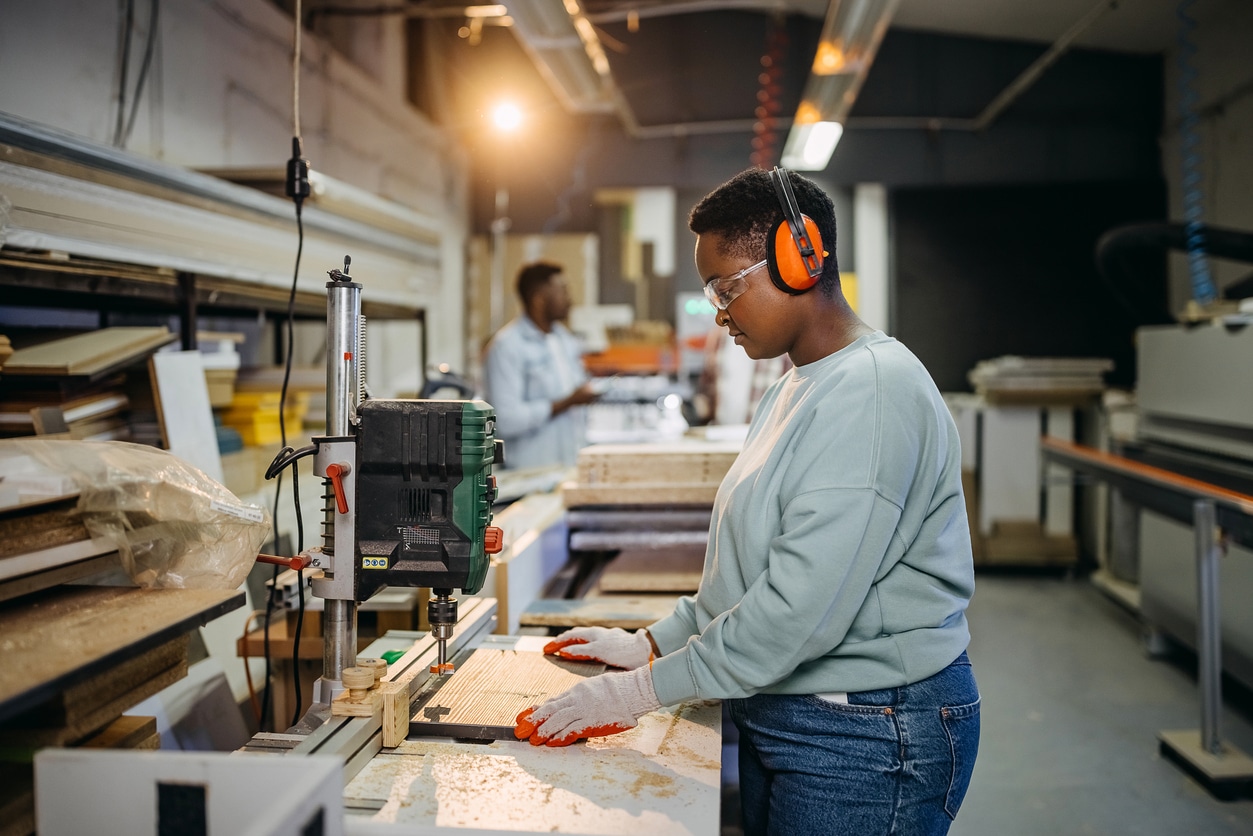Woodworking is both a fun hobby and an interesting profession. Whether you enjoy making accents for your home or custom furniture for clients, it’s essential to safeguard your hearing in the shop.
An estimated 5% of the global population has noise-related hearing loss. While it’s common, loud noise exposure is one of the most preventable causes of hearing damage. Let’s examine how noise damages hearing and a few tips to help you protect your hearing without sacrificing your craft.
How Does Loud Noise Damage Hearing?

Your inner ear houses the cochlea, a fluid-filled, snail-shaped organ lined with approximately 16,000 tiny hair cells. When sound waves enter the cochlea, they cause the fluid to move, stimulating the hair cells. The hair cells use that stimulation to generate electrical signals that travel down the auditory nerve and into the brain, which processes them as sound.
When the volume of sound is low, those tiny hair cells process it easily. However, if the sound level exceeds 85 dB, it overstresses the cells, causing them to bend or die. When the hair cells die, they can’t grow back, leading to permanent hearing loss.
How To Protect Your Hearing While Woodworking
The risk of hearing damage doesn’t mean you have to stop making tables, chairs and doorframes. Take the following three steps to protect your ears:
- Wear hearing protection. Earmuffs and earplugs lessen the force of sound as it hits your ears. Earmuffs are most commonly used in woodshops and construction environments because they completely cover the ear and are easy to take on and off. However, the best hearing protection is the one you’ll use most. Head to McCoy’s Building Supply and take a look at your options. If you prefer custom-fit earplugs for a comfortable, temperature-friendly seal, schedule an appointment for an earmold.
- Limit your time. Taking regular breaks away from the woodshop throughout the day will give your ears time to rest.
- Lower or turn off the music. Noise is compounding. If you’re playing music in the workshop while using power tools, you’re creating an even louder environment, further increasing your risk of hearing loss. Save music for times when you’re hand-sanding or staining to prevent damage.
In addition to the above tips, you should schedule regular hearing tests to track changes over time and spot hearing loss before it interferes with your life. Contact SoundLogic today to schedule your appointment.